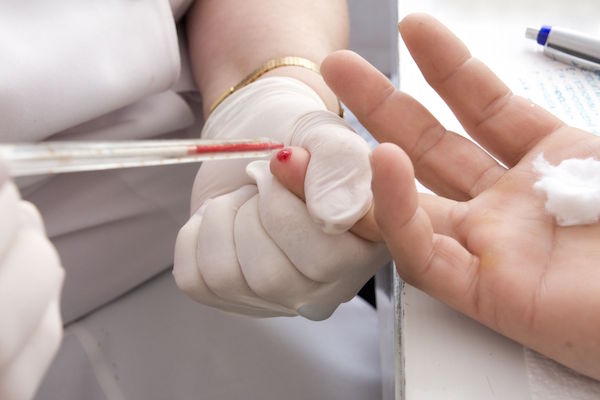
SATURDAY, June 25 (HealthDay News) — Dietary changes alone can yield the same benefits as changes in both diet and exercise in the first year after a person is diagnosed with type 2 diabetes, a new study contends.
English researchers found that patients who were encouraged to lose weight by modifying their diet with the help of a dietician had the same improvements in blood sugar (glycemic) control, weight loss, cholesterol and triglyceride levels as those who changed both their diet and physical activity levels (30 minutes of brisk walking five times a week).
Both groups achieved about a 10 percent improvement in blood sugar control, cholesterol and triglyceride levels compared to patients who received routine care. The two intervention groups also lost an average of 4 percent of their body weight, while those in a routine care group had little or no weight loss.
Patients in the routine care group were also three times more likely than those in the intervention groups to start on diabetes medication before the end of the study.
“Getting people to exercise is quite difficult, and can be expensive,” lead researcher Rob Andrews, a senior lecturer at the University of Bristol, said in an American Diabetes Association news release. “What this study tells us is that if you only have a limited amount of money, in that first year of diagnosis, you should focus on getting the diet right.”
He pointed out, however, that the study participants with type 2 diabetes preferred to engage in both exercise and dietary changes. “They found diet alone quite negative,” he said. One reason they might not have seen an additional benefit from exercise, he added, “is because people often make a trade. That is, if they go to the gym, then they feel as if they can have a treat. That could be why we saw no difference in the weight loss for the diet plus exercise group.”
Andrews suggested that future research focus on determining whether adding exercise at a later time would make more of a difference.
“[Blood glucose] control gets worse over time. In the early stages, people tend to make rapid improvements and then it stays the same for a while. Adding exercise later might provide another boost in control whereas it wouldn’t early on,” Andrews said.
The study results were slated to be reported June 24 at a symposium run by the ADA and The Lancet at the ADA’s Scientific Sessions meeting in San Diego.
A second study to be presented at the symposium found that intensive treatment of type 2 diabetes led to a slight reduction in cardiovascular disease risk factors.
For that study, nearly half a million people in Denmark, the Netherlands and the United Kingdom were screened for diabetes. The 3,057 people who were found to have the disease were assigned to receive either intensive treatment or routine care.
Intensive treatment included lifestyle changes (quitting smoking, healthier eating, more physical activity), aspirin treatment, and intensive medication treatment for blood pressure, blood sugar and lipids (blood fats). Those assigned to routine care were instructed to use national guidelines for advice on lifestyle and medical treatment.
Patients in the intensive treatment group showed clinically significant reductions in blood pressure and cholesterol and small decreases in weight and blood sugar levels maintained over a five-year period. The differences were greatest in the reducing the risk of heart attack and smallest in reducing the risk of stroke.
There were no statistically significant differences between the two groups in rates of heart attack, stroke, cardiovascular deaths or revascularization, according to the news release.
Experts noted that research presented at medical meetings is considered preliminary because it has not been subjected to the rigorous scrutiny required for publication in a medical journal.
More information
The U.S. National Institute of Diabetes and Digestive and Kidney Diseases has more about diabetes.

